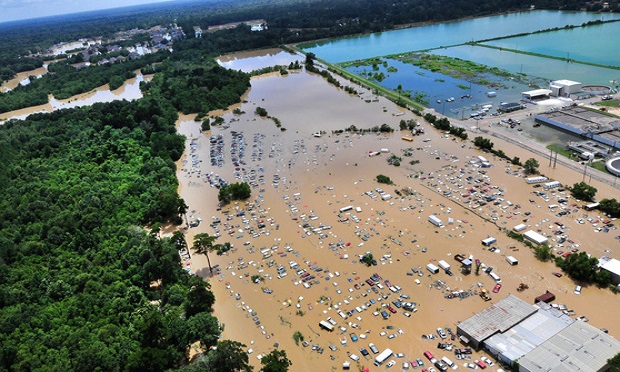Survey: Consumers urgently need flood insurance education
Homeowners are confused about their flood insurance options, their actual flood risk, and the cost of coverage.

The 2021 hurricane season started on May 15th, two weeks earlier than normal due to increased tropical storm activity in recent years.
To gauge consumer attitudes and awareness, Neptune Flood has completed the second annual Neptune Consumer Survey of Flood Awareness, conducted in partnership with the University of South Florida Customer Experience Lab in St. Petersburg.
After an extreme flood year in 2020, the survey results provide a clear indication of how the lessons from the prior year are being factored into consumer perception of risk and the need for flood insurance.
The Neptune/USF study highlights big gaps in consumer awareness of the risk of flooding as well as misconceptions about cost and coverage options. Consumers are looking for more education and information about their risk from all sources including the insurance industry and local, state, and federal government.
Big flood insurance problems
These findings put a spotlight on big problems related to flood insurance in the U.S. Consider this:
- Too few homes have flood insurance. Less than 5% of U.S. homes have any flood insurance, yet approximately 50% of U.S. homes are at moderate to extreme risk of flooding, according to a 2019 Verisk study. In addition, a big hidden problem is that with low National Flood Insurance Program (NFIP) limits, a significant percentage of NFIP policyholders are underinsured.
- The coverage gap is not closing quickly enough. In fact, the NFIP has about the same number of policies as 10 years ago. Private markets have done a great job of providing compelling options to homeowners with lower prices, much higher limits, and optional coverages not available under the NFIP, but structural barriers to private flood exist throughout the ecosystem. These barriers include regulatory hurdles, lender resistance due to FHA and VA slowness in changing their documentation to reflect federal law, and NFIP overpayments to its Write-Your-Owns (WYOs) program via inflated commissions that propel agents to quote NFIP.
By the numbers
The latest Neptune/USF survey of 1,254 consumers in 39 states also includes these key findings:
- Most people still do not appreciate the risk their home is in of being flooded, with 60% believing they are at ‘low or no risk.’ However, overall risk awareness is increasing, as nearly 50% believe that their flood risk is higher now than when surveyed prior to the 2020 hurricane season. Only 7% believe the risk is lower.
- There is a high level of confusion over the term “flood zone.” One in three respondents believes their home is “not in a flood zone” when every home is technically in a flood zone. Some are just in higher risk zones than others. Another 33% of homeowners don’t know what flood zone they are in.
- The coverage gap remains a significant problem. When asked for recommendations on how to improve the situation, 25% of respondents support broader mandates, and 24% suggest more private competitors to the government’s NFIP. When considering whether to buy flood insurance or not, 50% of respondents expect to be able to see if homes in their neighborhood, as well as homes they are considering purchasing, have had flood losses in the past.
- Consumers expect fully online transactions rather than invasive home inspections and paper documents — a trend that was accelerated by the COVID-19 pandemic. Nearly eight out of 10 homeowners believe that this is of moderate to high importance.
Verbatim responses to the survey indicate the importance of advisors such as insurance agents, real estate agents and neighbors in deciding whether to purchase flood insurance. For example, 16.5% of individuals purchased flood insurance based on a real estate agent’s recommendation, and 8.1% bought flood coverage because their neighbors already had it.
Contrary to popular opinion that flood awareness is limited to locations where hurricanes hit, regional analysis (West, Midwest/inland, South, and Mid-Atlantic/New England) indicates very similar perceptions of risk in all regions.
What this means for insurance professionals
With climate change on the rise, there must be more urgency around increasing flood insurance uptake. The industry must increase its focus on educating consumers, real estate agents, lenders and anyone involved in residential properties. Consumers need to know there are options other than the NFIP, and that there are web-based sites where you can enter your address and get a clear indication of your risk as well as a bindable quote.
Regulators and legislators also should accelerate their efforts to remove barriers to private flood insurance, which would shift risk to the private markets and take the burden off of the taxpayer to fund the NFIP’s multi-billion-dollar losses.
Jim Albert (jim@neptuneflood.com) is chairman and co-founder of Neptune Flood in St. Petersburg, Fla.
Also by this contributor:

